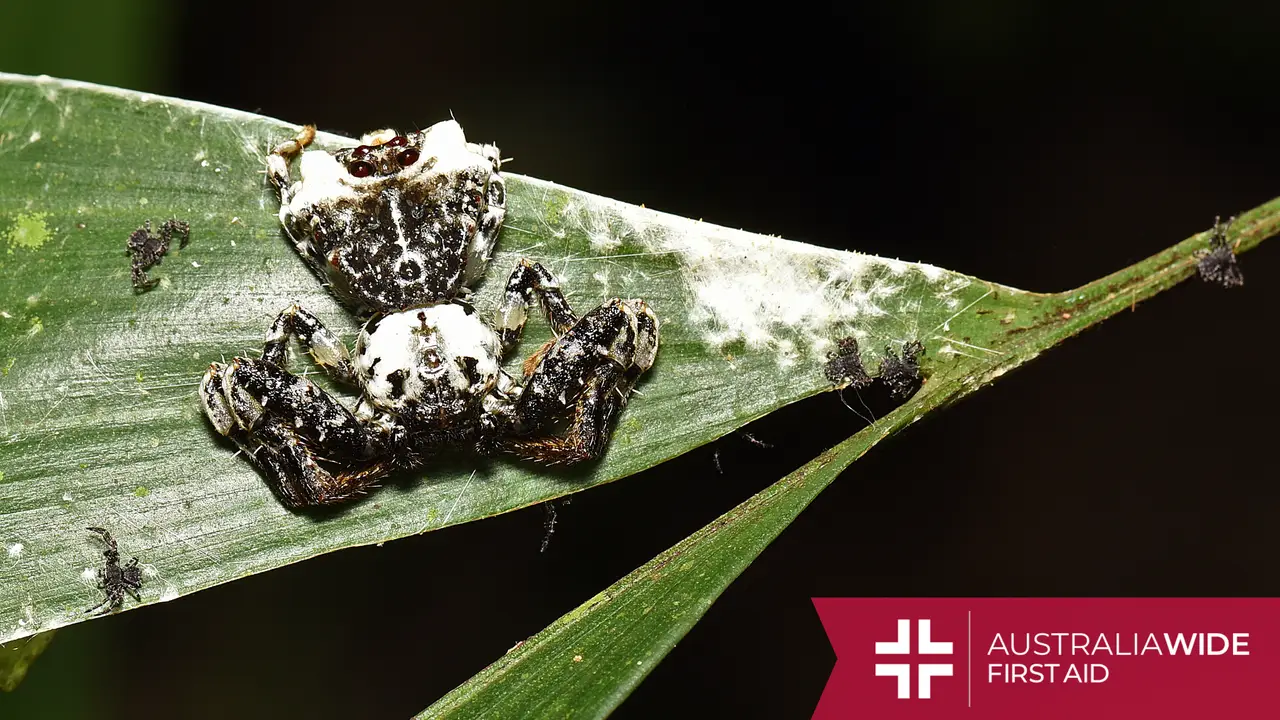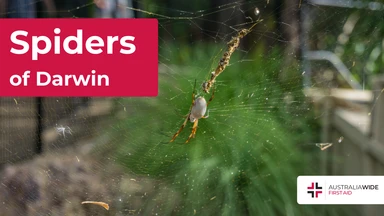The Bird Dropping Spider: A Master of Mimicry


The Bird Dropping Spider (Celaenia excavata) is a unique and fascinating spider species found in eastern and southern Australia.
Of the family Araneidae, they’re also sometimes called Death's Head Spider, Orchard Spider, or the Bird-dung Spider.
You can sign up to our general or childcare first aid courses to learn more about identifying and treating spider bites. We have locations across all of Australia.
The Bird Dropping Spider, as the name suggests, has evolved to have a body that looks like bird droppings. The coloration and pattern on their abdomen resemble the texture and colour of bird droppings.
This clever disguise helps them blend in with their surroundings and avoid detection by predators such as birds and other insects.
They have a broad and triangular body that is brown or greyish in colour, and can have a diameter of 12 mm in females and 2.5 mm in males.
Despite their small size, the Bird Dropping Spider has strong front legs that allow them to capture prey. Their web is also incredibly strong and sticky, allowing them to catch and hold onto insects that are several times their size.
They prey on a variety of insects, including moths, flies, and beetles.
The Bird Dropping Spider is most commonly found in eastern and southern Australia, though they have been recorded in central Australia.
The Bird Dropping Spider is usually found hanging upside down from its web, which is typically constructed on the edge of a leaf or twig.
They prefer to live in areas with high humidity and lots of vegetation, such as rainforests and wet eucalyptus forests, but can also be found in urban areas such as parks, orchards, and suburban gardens.
These spiders are nocturnal and are most active at night, when they use their webs to catch their prey.
One interesting aspect of the Bird Dropping Spider's behaviour is the chemical mimicry it uses to attract prey.
The spiders release a chemical scent that mimics the pheromone released by female moths to attract male moths. This scent helps the spiders lure their prey, particularly male moths, into their webs.
Another interesting behaviour of the Bird Dropping Spider is their use of short silk threads to drop from their webs and escape from danger.
When threatened, the spider will drop down on a short silk thread, then climb back up when the danger has passed. This behaviour is particularly useful for avoiding predators such as birds and wasps.
Females can lay up to 200 eggs, which are stored in egg sacs measuring roughly 12 mm in diameter.
The Bird Dropping Spider is not dangerous to humans.
Its venom is relatively mild and not lethal, although it can cause mild to moderate pain and swelling if you are bitten.
If you are bitten by a Bird Dropping Spider, you can apply a cold compress or ice to reduce pain and swelling. You can do this for periods of up to 20 minutes.
DO NOT use the Pressure Immobilisation Technique, as the venom moves slowly and this will just worsen the pain.
If symptoms become severe, or last longer than several hours, seek medical attention.
Bird Dropping Spiders are a fascinating species that have evolved to camouflage as bird droppings.
They are not dangerous to humans.
If you would like to learn more about providing first aid in the event of an insect bite or sting, book a First Aid course with us today. You can also learn how to provide first aid in an education and care setting.

March 11, 2025
Darwin, the tropical capital of Australia’s Northern Territory, is home to a rich diversity of wildlife - including an impressive array of spiders. From the sprawling webs of golden orb-weavers to the cryptic camouflage of trapdoor spiders, these arachnids play a vital role in the local ecosystem. While some may inspire fear, the majority are harmless and even beneficial, helping to control insect populations.

September 4, 2024
Cat bites, while often underestimated, can lead to serious health complications if not treated promptly and properly. Cats' mouths harbour a variety of bacteria that can cause infections in humans.

April 1, 2024
Encounters with wildlife can often be thrilling, but when it comes to the creature known as the drop bear, the experience can quickly turn dangerous. A sharp increase in recent attacks prompts the need for understanding proper first aid procedures in case of an attack.